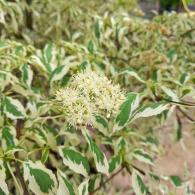Populus Tremula - Quaking Aspen Tree
1. Add items to basket
2. Go to the basket
3. Enter your postcode in Delivery Price Check
Plant shape: Full standard
Trunk height: 1.7-1.8 m
Trunk girth: 8-10 cm
Rootball - supplied without a pot
Plant ID: 3847 100
Plant shape: Full standard
Trunk height: 1.8-2 m
Trunk girth: 10-12 cm
Rootball - supplied without a pot
Plant ID: 3848 100
View plant size:Plant shape: Full standard
Trunk height: 1.8-2 m
Trunk girth: 12-14 cm
Rootball - supplied without a pot
Plant ID: 7422 100
Plant shape: Full standard
Trunk height: 2 m
Trunk girth: 14-16 cm
Rootball - supplied without a pot
Plant ID: 3850 100
To check delivery cost add your plants to basket, then you can type your postcode in our Quick Delivery Price Check.
Populus Tremula or Quaking Aspen Tree
The broadleaf deciduous aspen tree is native to the U.K. and most of Europe. The Latin term ‘tremula' roughly translates into ‘trembling’ and refers to the way the tree's foliage trembles when the wind blows. The tree is also commonly called the Quaking Aspen.
The Aspen tree’s shimmering round foliage boasts irregular blunt teeth. The leaf stalk of each leaf is uniquely flattened and extremely flexible near the leaf blade. This enables each leaf to flutter and quake when the wind blows. The tree’s young leaves emerge in shades of copper late in the spring. As they mature, they turn green. During the autumn months, the foliage colours change to a brilliant yellow with some rare shades of red. The leaves tend to remain on the tree until the first snowfall or heavy frost.
From March through April, catkins start to appear on the tree. The Aspen is dioecious, so it produces male and female catkins on separate trees. Male catkins are a greyish-brown and tend to dangle down. Female catkins are less noticeable and appear in soft shades of green. Upon pollination, the female catkins produce furry seeds that are released into the air. Both the male and female catkins turn a woolly grey as summer progresses and often remain on the tree well into the winter months even after the foliage has fallen away.
When mature, the Aspen tree usually stands 25 meters in height with a canopy width of 10 meters. The bark is a silvery grey with fissures when young. Upon maturity, it develops a darker grey shading and has black lichen.
The Aspen tree grows best in full sun or partial shade and is extremely accepting of a variety of soil types. It prefers neutral to acidic soil. The tree thrives in moist soil and can even tolerate soggy conditions. It can be planted in heavy clay soil to improve drainage. Although the tree can withstand strong winds, it is not ideal for a maritime region. Many more tree in our deciduous trees section.












